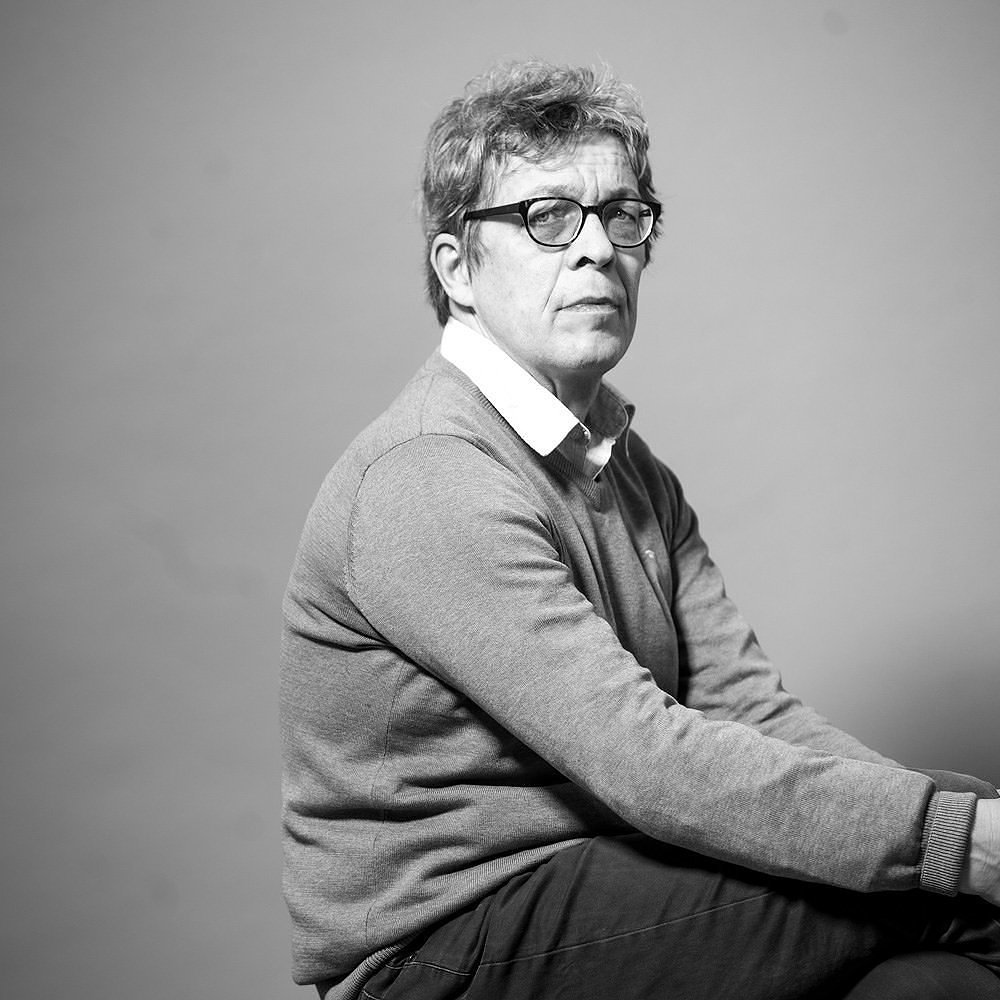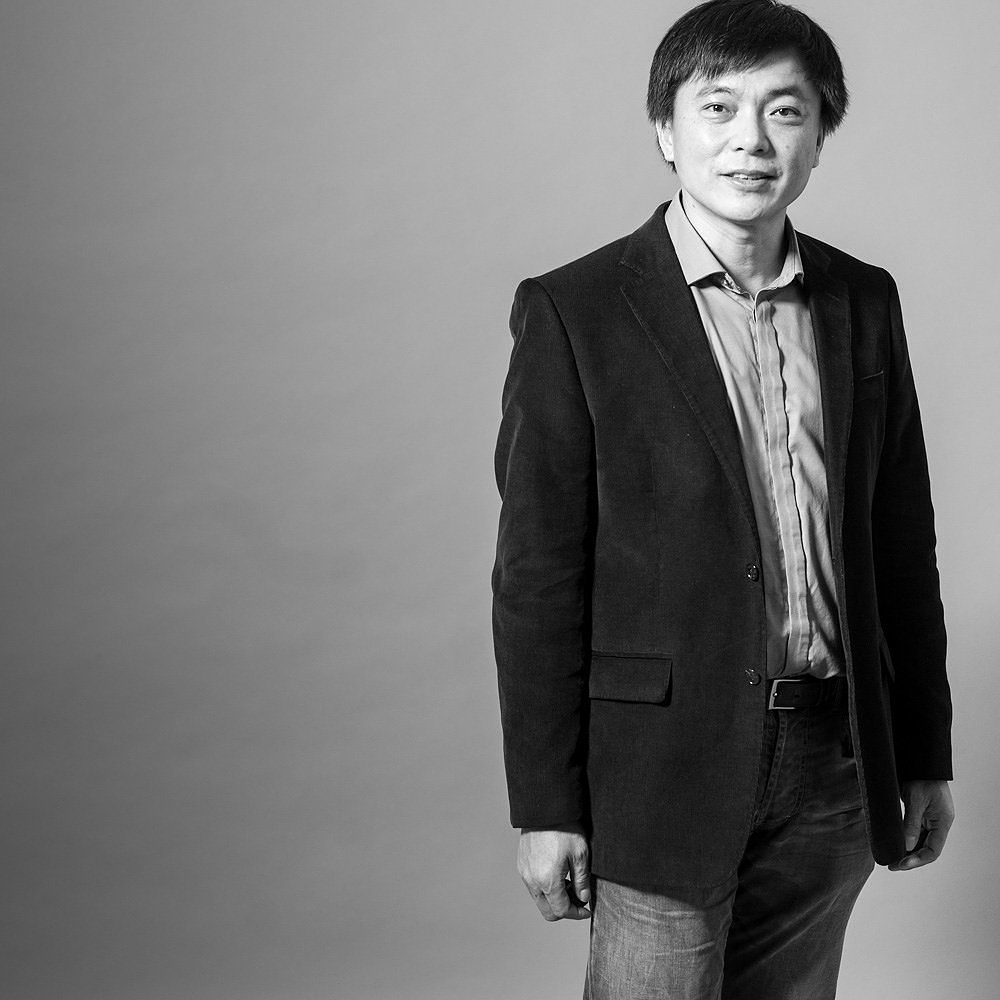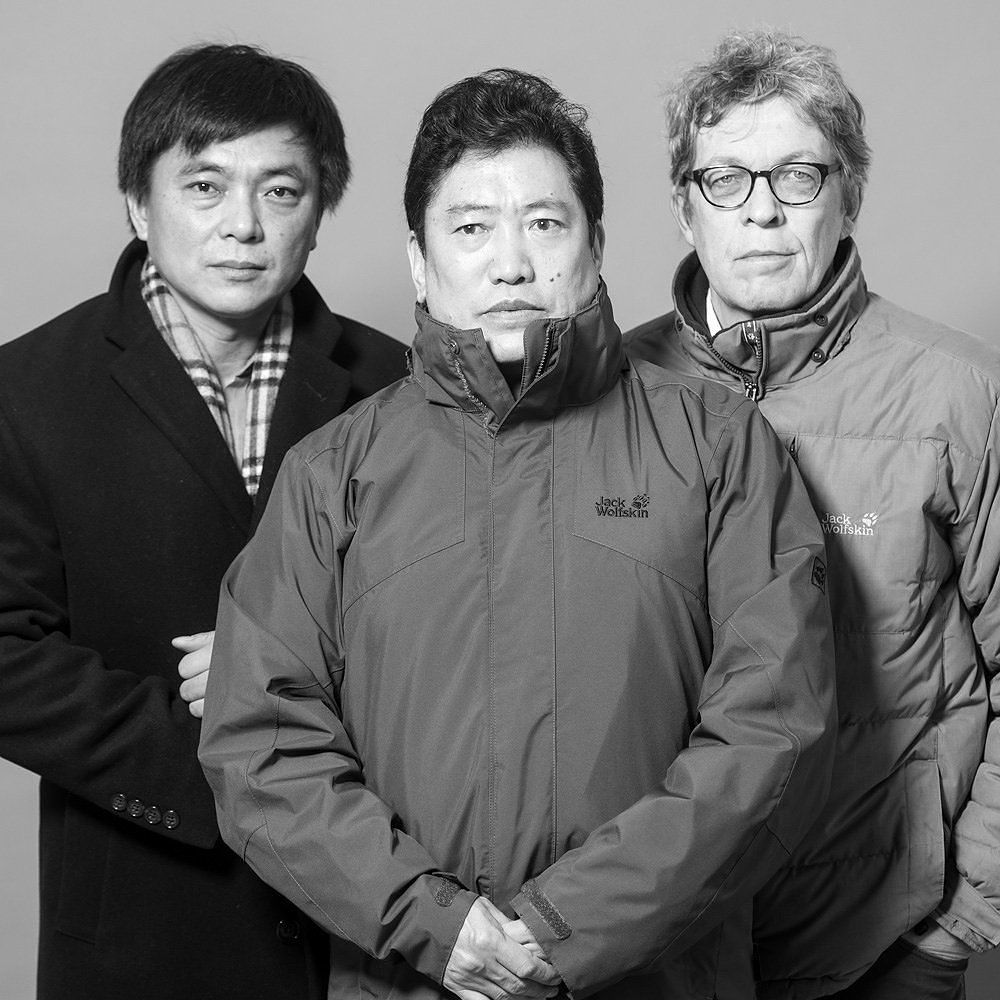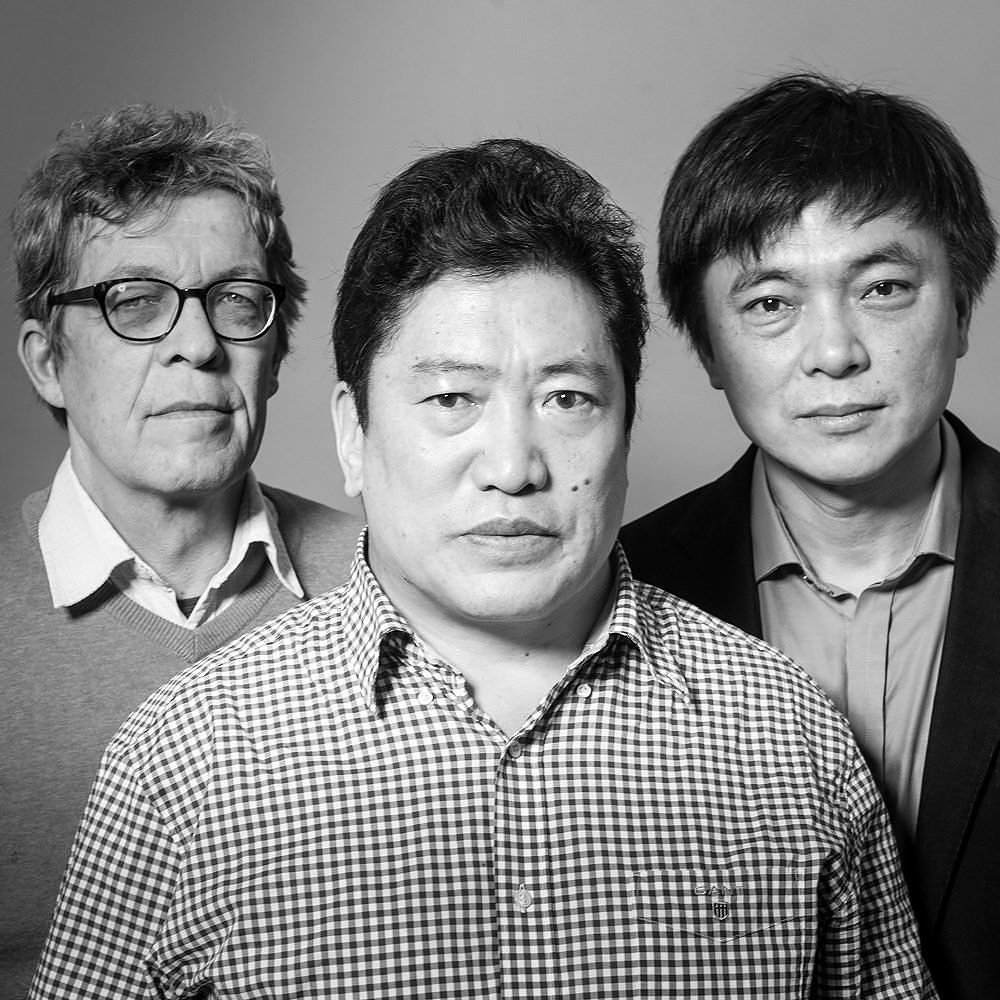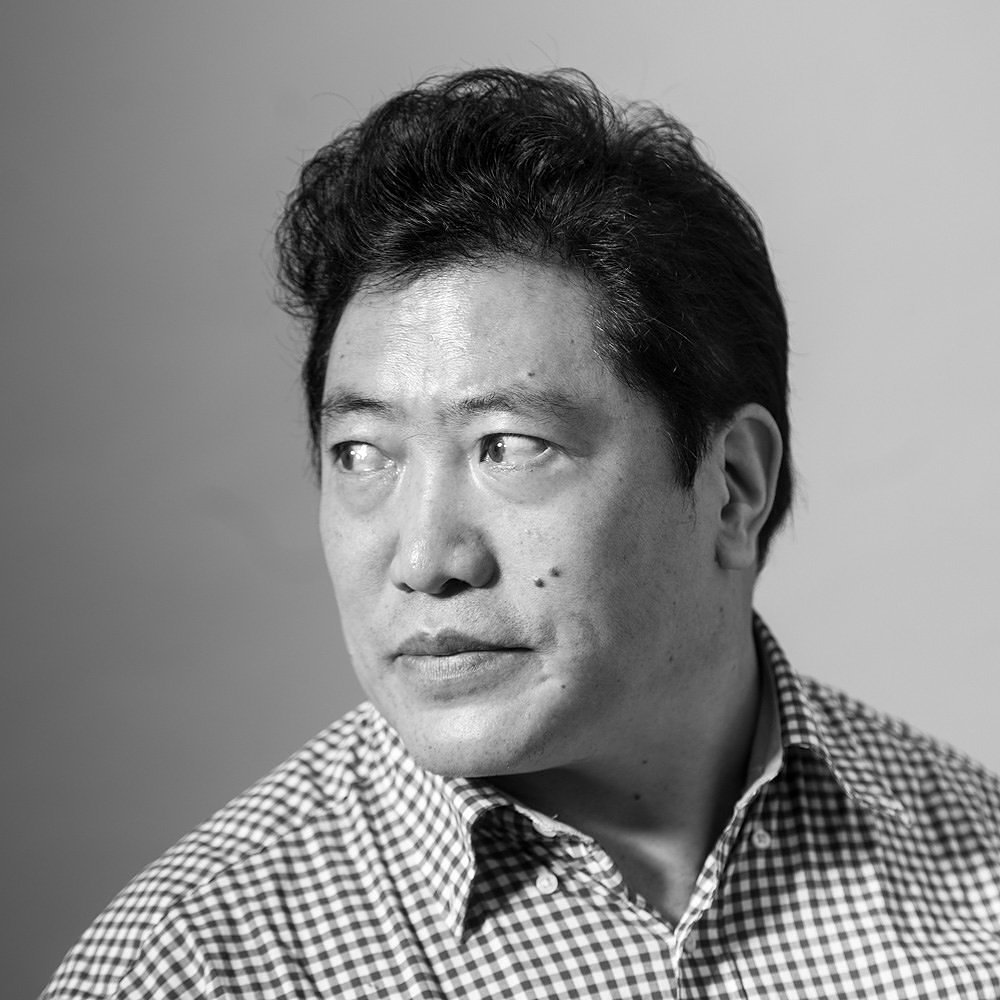Issue 10 / February 2015
Sounding Tibet in Grunewald
a portrait of Guntram Hazod, Tsering Gyalpo, Weirong Shen by Michael Oppitz
A religious studies scholar from Lhasa, a Tibetologist from Peking, and a social anthropologist from Vienna are working on “Tibetan Genealogies” together.
The topic is just as multifaceted as the intellectual diversity of its members:
Tsering Gyalpo, Weirong Shen, and Guntram Hazod
What is it that might be particularly attractive about one of the Wissenschaftskolleg’s focus themes – the culture and history of Tibet? In the first place the field of “Tibetology” itself, which during the past three or four decades has experienced a phenomenal upswing and exercised a magnetic attraction upon a younger generation. A succinct title such as Günter Eich’s Ein Tibeter in meinem Büro (1970; A Tibetan in My Office) – surreal, eccentric, laconic – today sounds almost like an everyday utterance. Tibetology has long been a fixture of university curricula, a field of immense variety. The manifold nature of that field, which itself reflects an extremely diverse culture, can be seen in the interests of three researchers brought together by the Wissenschaftskolleg – a Tibetan, a Chinese and an Austrian.
Tsering Gyalpo from Lhasa has made a name for himself in having discovered cultural sites in western Tibet – on the foundations of the old Guge Kingdom in the Sutlej River Valley and to the southwest in the adjacent former Purang Kingdom along the Karnali River. It was in the Guge region where Tsering Gyalpo located a number of previously unknown caves with wonderful Buddhist mural art from the fourteenth and fifteenth centuries, making them accessible to scholars for the first time through publication of his research and findings; and in Purang, with the help of a small team of colleagues – using manuscripts and inscriptions found at the site – he was able to gather ethnographic, historical and artistic evidence as it pertained to the tenth-century Khorzhak Monastery. Here too his particular focus was the surviving works of art, especially those temple paintings from the tenth to fifteenth century along with what are most likely the oldest woodcarvings in western Tibet. As scion of a nomadic family with whom he wandered the western Tibetan uplands as a youngster, Tsering developed an alertness to the multifarious landscape which proved advantageous for his explorations of the craggy and almost impassable terrain. And the ceaseless peregrinations of his youth are also likely to have sharpened his ear for stories of the settled peasantry – an interest that has meanwhile exhibited itself in his research on local oral traditions.
Shen Weirong, from Beijing, made his initial mark as an historian and philologist with a biographical work on the first Dalai Lama, Gendün Drub (1391-1474), a pupil of Tsongkhapa, who was founder of the Gelupga order. Shen’s is a multi-layered historiographical study on the life and work as well as the institution of the Dalai Lama while at the same time providing a general history of the Gelugpa school. This was his doctoral dissertation submitted to the University of Bonn in German and accompanied by annotated translations of two Tibetan biographies of the first Dalai Lama. Shen’s gift for languages (among others classical Chinese, Tangut, Uyghur, Mongolian) blazed the trail for his expansion of research on Buddhism beyond Tibet and China into Central Asia. From the eleventh to the fifteenth century it was primarily the Tantric form of Tibetan Buddhism that gained traction in the Central Asian regions – the Xixia Kingdom of the Tanguts, the Uyghur areas of settlement, and China of the Yuan and Ming dynasties. Shen Weirong traced the Central Asian imprint/impact on Tantric Buddhism by way of comparative textual criticism – old Uyghurian writings from the Turfan collection in Berlin; Tangut texts from findings made in the desert city of Khara Khoto, today housed in St. Petersburg; manuscripts from the Dunhuang Caves, now to be found in Paris; and Chinese translations from the Tibetan presently housed in state and national libraries in Beijing and Taipei. It is by grace of this comparative philology and its cultural contextualization that Shen hopes to gain new insight into the religious history of Tantric Buddhism in the catchment area of the Silk Road.
The third member of our group, Guntram Hazod from Vienna, whose fieldwork took him from Dolpo in northwest Nepal across the main Himalayan range to Tibet, gradually shed the broad label of social anthropologist for more concrete indicators of where his real interests lay, calling his work “historical anthropology” and more specifically “historical geography,” which conjoins various methods to conceive a new historical picture, for instance of imperial Tibet from the seventh to the tenth century. Ethnography, textual analysis, cartography, satellite images, iconography and documentary photography are his coequal tools in reconstructing the past and interpreting it anew. It was together with Per Sørensen from the University of Leipzig – who supplements the Wissenschaftskolleg’s Tibetologist team for a short while – that Hazod applied this system to the large-scale project Rulers on the Celestial Plain, a joint study of the Valley of Lhasa as a showplace of religious and secular power in medieval Tibet. This methodological approach is also presently being applied to a research project on the burial mounds of central Tibet from the fourth to the tenth century, i.e. from that period before establishment of the Tibetan empire through to its denouement. In terms of the current research – depending on the operative research intention – Hazod also speaks of landscape ethnology or landscape archeology. In documenting the ‘burial sites’ of pre-Buddhist Tibet and the country in its early stages of Buddhism, our customary view is being expanded beyond the narrowly conceived geographic space to encompass early forms of burial in Central Asia, which, we assume, exerted not only a decisive influence on the development of Tibetan tumulus traditions but also upon central features of Tibetan kingship. The geographic trajectory of this comparative perspective is similar to that pursued by Shen Weirong with his textual criticism.
If one directly juxtaposes the individual achievements and projects of the three Tibet researchers with one another, they make for a wide spectrum of approaches – art history, the history of monasteries, epigraphy (Gyalpo), historiography, schools of Buddhism, philology, comparative textual criticism of Tantric writings in various languages (Shen), historical geography and ethnography, political and landscape anthropology, archeology, oral tradition (Hazod). They are all united by a strongly historical view that encompasses both large swaths of geography and chronology, this latter ranging from the pre-Buddhist period to the present day. The various approaches in this methodological system are also accompanied by the researchers’ assorted points of departure – an internal perspective in the case of Gyalpo, an adjoining and at the same time contrasting view in terms of its political underpinning where Shen is concerned, an external European perspective in the instance of Hazod. There is possibly explosive potential here; while at the same time, for the Wissenschaftskolleg, it creates a very attractive occasion for intellectual debate.
Political developments during the last sixty years have of course impacted not only scholarly approaches to research on Tibet but also the thematic spectrum of that research. For a long time ethnographic field studies undertaken by foreigners were forbidden and were only then later permitted in restricted fashion. This helps to explain why, for a very long time, Tibetologists from the West largely confined themselves to textual studies. The imbalance between text-based and ethnographic research is still discernible today. But in the last twenty-five years Hazod and his comrades-in-arms, among them Gyalpo and Sørensen, have had the privilege of being able to research time and again historic sites in Tibet and identify old historical toponyms as the names of real places while simultaneously cross-referencing them with still vital customs – that is to say, carrying out historical research and archeology with the aid of one’s own ethnographic investigations.
The last and likely most important reason for the general interest in Tibetology at the Wissenschaftskolleg is owing to the various species and characteristics of “genealogies” that are here being jointly studied. In Tibet this means certain types of ancestry, or descent relationships, each of which functions as a self-contained system but which can still have a reciprocal impact on each other.
The first type is the biological genealogy – lineage constituted by physical kinship. As in all societies, every person is a link in such lines of descent, independent of whether and to what purpose that person might invoke his lineage, independent of whether it has been drawn up in written form, and independent of how far back it might be traced. In Tibet a clear distinction is made between a person’s patrilinear and matrilinear lineage – the former is called the “bone line” and the latter the “flesh line.” Flesh and bone together constitute the essence of a person. Traditionally the female or flesh line is often held to be responsible for a person’s genetic characteristics whereas the male or bone line determines who may marry whom. Individuals with the same bone line are off limits to each other whether as a basic principle or merely for a prescribed number of generations. The bone line requires exogamy. Irrespective of one’s class or status – whether a simple peasant or shepherd or an aristocrat – every individual is beholden to the exogamy dictate of his or her paternal clan. In aristocratic lines a person’s membership in a clan carried particular weight in that one married into other equally prominent clans so as to forge alliances that were important in helping consolidate and expand one’s own power and standing. It is a remarkable fact that the classificatory division of biological kinship into bone and flesh lines can be found not only in traditional Tibet but in numerous local cultures in the Himalayas, in Mongolia, and in several Central Asian societies – and this being independent of the respective languages. Bone and flesh (or bone and milk) therefore is a conceptual interpretation of kinship that is extremely widespread.
After the universal genealogies of physical descent, a second one that is perceived as characteristic of Tibet is the so-called line of transmission, an ecclesiastical institution applicable to Buddhist clerics. This form of “genealogy” registers and recalls which pupils in a certain monastic order had which teacher and whom these in turn had for teachers – i.e. it records the diachronic transmission of certain preferred strains of religious teaching from one generation to the next, and those individuals appearing in the genealogy who are considered true and rightful exponents of that wisdom. Lines of transmission can be found in all the various permutations of Tibetan Buddhism. These are open systems that do not depend on physical parentage. They are also open in the sense that they operate independent of local or regional ancestry, ethnic extraction and national provenance. It has been said that such lines of transmission are an internal invention of Tibetan Buddhism. This may be true of those that have been fixed in writing, but within the confines of the nameless little local religions of the Himalayas there are other lines of transmission that are performed verbally and passed down from mouth to ear in ritual song by religious specialists who do not fundamentally avail themselves of the written word.
A third and even more open type of genealogy is the line of incarnation. It completely ignores the physical lineage and social milieu of a candidate for reincarnation in relation to his forerunner. As a general rule any child can be a candidate for reincarnation. The selection of a successor to be reincarnated – and the accompanying transmission of character traits of the deceased to a living person of the next or the second-to-next generation – is based on a testing procedure monitored by a jury. The candidate is most often a child without any personal ambition for the distinction and he must not only exhibit the character traits of his predecessor but must first and foremost identify – from amongst a plethora of submitted objects – those as his own which had in fact belonged to his precursor. It is through selection of the proper objects that a child proves he is the incarnation. It is of no concern to the testers if the procedure has been manipulated or left to only marginal chance – the chosen one is he who has successfully passed all the tests no matter how irrational they might appear. The sequence of incarnations, which emerged over generations from the repetition of this vetting process, was probably introduced relatively late into Tibetan Buddhism, likely in the thirteenth century in tandem with the emergence of monastic hegemony and against the political backdrop of the Mongolian Yuan dynasty in China. The most famous of the incarnation lines is that of the Dalai Lama, reaching back to the eternal age of gods and Avalokitesvara, who according to the mythical tradition was the first to bring civilization to the Tibetans. On account of their spatial expanse and genealogical intermeshing with seven main lines, the sequence of Karmapa incarnations in particular could and can be termed a global system. Whereas those in the line of succession in Tibet traditionally traveled from village to village and from camp to camp to be revered as “living Buddhas,” today Western offshoots can be found once more in modern centers of learning that may nevertheless be regarded as genealogical sub-branches. The incarnation phenomenon is also a fixture among the tribal societies of the Himalayas where local shamans instead of lamas are reborn along similar testing lines. This fact raises certain questions – namely how have Buddhist practices impacted non-Buddhist ones and how were pre-Buddhist practices seized upon and modified by Buddhism?
In a loose sense one can also speak of genealogies with regard to the historical constitution of Tibetan Buddhism as a whole – the influences that formed it from the inside and the outside both. On the one hand there were the cultural influences exerted on Tibet from India, China and Central Asia and which in turn were transformed into a unique amalgam upon the Tibetan highlands. These influences have been well researched and documented. On the other hand almost no research at all has been done on much older affinities that point in the direction of western Central Asia or on those adaptations that have their sources in diverse societies of the Tibeto-Burmese region or even among the Siberian peoples. Numbering among these are the tribal and local societies of the bordering Himalayan countries. Even though ethnographers over the years have presented us with a sufficient number of detailed descriptions to permit of considered reflection, these societies have been largely neglected by scholars who see them as having had no impact on one of the great writing cultures owing to the fact that they have no written tradition themselves. Included in this group, and perhaps even more markedly, are those traditions of pre-Buddhist Tibet that are often subsumed under headings such as “religion without name” or merely “Bon.” It is naturally problematic in the case of such slow and smoldering processes – in which individual protagonists are difficult to separate out – to speak of genealogies in the strict sense but only as a rough analogy.
Use of the word “genealogy” is also analogous in a more concrete sense when, as Hazod suggests, one applies it to the animal kingdom. Meant by this is a ritual content that Hazod ascertained in the course of his research on burial sites in old Tibet and whose vestiges can still be seen in ongoing tribal traditions. In what are apparently very old burial rites in the Himalayas, certain animals were saddled with the important task of accompanying the deceased on his final journey from the human sphere into the transcendental or extraterrestrial realm. They were to guide him along this path and serve as lead or assistant animal into the Great Beyond, this wholly based on the profane model of those animals to whom were assigned a certain role – as lead animals or carriers of provisions and commodities – on those customary treks of transhumant herds, nomadic wanderings or on trade routes. The animals characteristically chosen for these tasks in the death rites were those which had shown themselves particularly suited to such tasks in everyday life – sheep, horses, yaks. At the end of their service as escorts to the dead, a gift of them was then made to the deceased through their sacrifice. The number of animals sacrificed depended on the honor in which the deceased was held. Most important was that the animals be of value and that one could show a lineage analogous to that of the deceased. The genealogical attestation, the pedigree, or bloodline not only increased the gift-giving worth of the sacrificial animal but the esteem in which the deceased was held.
To the degree that the genealogies extend from the earthly present to the deceased’s post-earthly future on into the extraterrestrial world – evident in the example of the old burial rites – the keepers of the genealogical tree also took the opportunity to extend their backward gaze beyond the historically accredited bearers of the line and into the mythical age and genesis of the tribe as well as the nation itself, and even into the origins of the human race and the world of the gods. This extension of the line of whatever type – the biological descent, the transfer of religious knowledge in the transmission lines, and of course reincarnation – into the non-human world was not only attestation of the truth that the transcendent plane was conjoined with the verifiable reality of historical figures, but also the genealogically linked historical figures are elevated, as it were, through their link to the lofty sphere of the supernatural. For instance, in Tibet of the imperial epoch it was through this very stratagem that the royal line was exalted as the rightful heirs to divine genealogical relationships – as those individuals who by grace of their transcendent lineage carried forward the business of the divine on earth. For their part the aristocratic clans in Tibet – and in a similar fashion the clans of indigenous tribes in the Himalayan uplands – have interwoven their respective genealogical histories with the history of their migrations and wanderings and integrated them into their rituals. It was together with certain healing and burial ceremonies that religious specialists staged (and still to this day stage) ritual voyages that took the form of mythical chants narrating routes to the origins of the relevant tribal group. In such chants there are long lists of place-names which function as intermediate stages in the backward journey and are interwoven with lists of those ancestors who of course set out on the route of their migration in the exact opposite direction.
The elite strata in Tibet had their genealogies consistently fixed in writing, thus taking the physical form of documents which they could present at any time as proof of the historical facticity of those genealogies. Such writings served as a means of attestation particularly when other forms of substantiation were lacking. Genealogies and dates pertaining to one’s glorious past could also be altered with the aid of such writing. Histories could be set down on paper, stone or metallic writing surfaces, integrated into appropriate rites and once more deployed as evidence. The transcription of genealogies helped not only to ensure the survival of their record but also the reliability of that record. Societies that did not rely on writing to nurse their traditions – because they were wholly illiterate or rejected writing as a dangerous tool in the abuse of power – were by contrast manifestly disadvantaged; though there is a tendency to exaggerate the fragility and ephemerality of their kind of history and transmission, for many of the richer oral traditions have proven to possess great resiliency and endurance. Others have perished even more silently than the quiet crackling of burning paper. But the preservation of oral traditions is fundamentally threatened from within when the medium itself is at stake – when the knowledge of the forefathers is for whatever reason not committed to memory by succeeding generations – and the genealogies that were previously sung at length in the oral recitals grow shorter.
Wiko’s Tibetologists resolved to undertake a collaborative investigation of Tibet’s various types of genealogy in terms of their distinctive features and characteristics. At the same time they want to discover how these genealogies were interrelated – how they intersected, how they fortified or modified one another, and how they competed with one another. As mentioned at the beginning of this piece, genealogy played a fundamental role in neither the search for a reincarnation nor in the selection of a disciple for the line of transmission. But it did play a secondary role insofar as after the selection was made the members of an old aristocratic line, which was naturally based on biological lineage, would place a clerical line of transmission under its territorial protection and in this way strengthen or in fact weaken it by then favoring another line. Outstanding personalities in a line of transmission, for their part, could use their prestige and standing either to shine a political light on a clan or distance themselves from it. There are also historical examples of representatives of the incarnation line exercising this option. Contingent on the political conditions and depending on whether the head of the line, the Dalai Lama, or a Karmapa or Sakyapa were involved, alliances would be concluded with other lines, be they clans or teachers in a certain line of transmission, or they would be reconfigured within the power structure.
Whether in and of itself or in combination with one or more types of genealogies, any genealogical system constitutes a mobile and manipulable means of reshaping both social conformations and cultural nexuses for practical, political or ideological goals and – beyond legitimating its own authority – in effectuating a certain vision of reality. Throughout the highlands of medieval Tibet these systems formed networks so dense that they had the complexity of a modern-day road map. Once these genealogical networks are collated and mapped out, it will be possible to have not only the habitual diachronic but a synchronic overview of matters that allows for lateral movement, as it were, with every junction permitting one to embark in a new direction.
This shift in perspectives expands the potential for drawing certain historical conclusions. It is an approach that affords a closer look at historical correlations and which can serve as an exemplary visual model for entirely different historical spaces and cultures.
More on: Guntram Hazod Tsering Gyalpo Weirong Shen
More on: Tibetan Genealogies
Images: © Maurice Weiss


